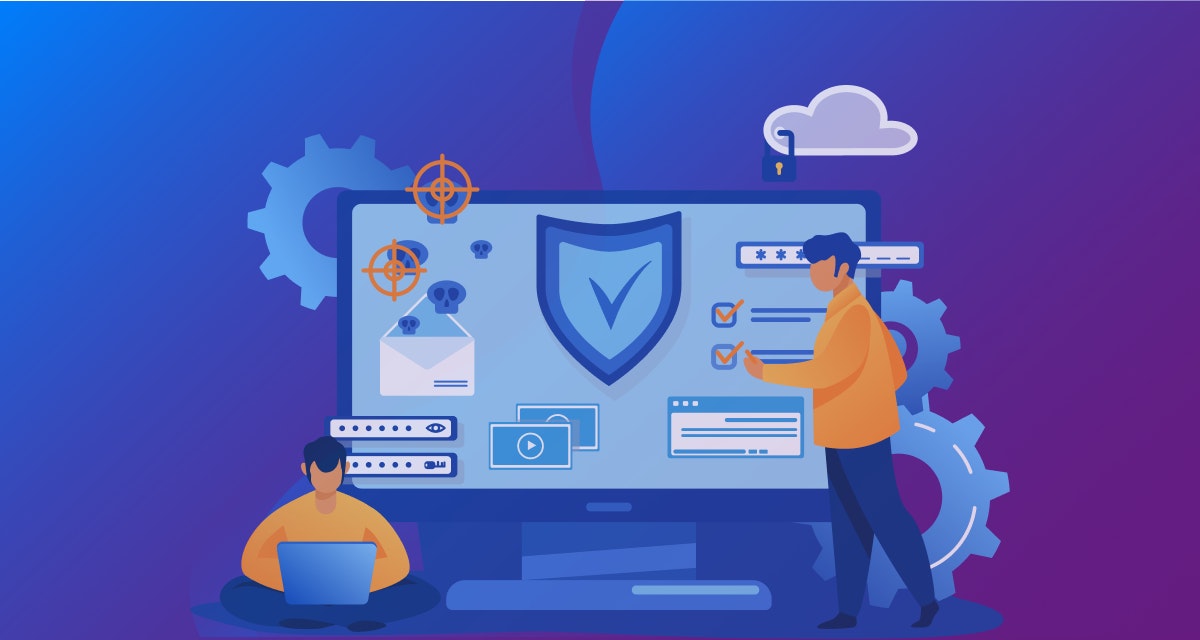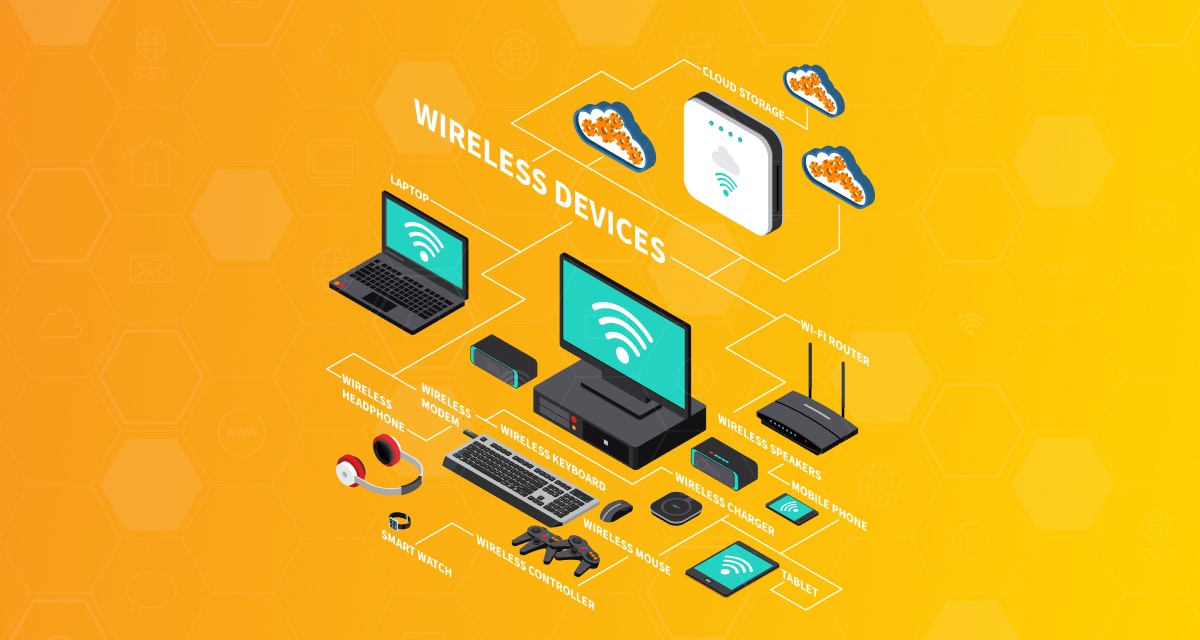Cloud computing is one buzzword that has been doing the rounds in IT for the past decade. It refers to the process of storing, accessing, and managing software applications and big data on the internet.
It uses a firewall-protected network to safeguard the data and makes data-accessing tactics more efficient and reliable with minimum admin effort. It is a type of technology that has primarily replaced the traditional data handling processes.
A typical example of cloud computing is using web-based email services or working on any document online (think: Google Docs). In a nutshell, you can access either of these cloud computing applications without using your laptop or desktop hard drive.
According to a recent study, 2021 will witness a 35% growth in the public cloud infrastructure, and the global service market is predicted to be valued at $623.3 billion by 2023.
Characteristics of cloud computing
- On-demand service: Use it until needed; requires no upfront payment for resources.
- Shared resources: Many end-users share computing resources.
- Network access: The Internet is the core medium connecting all cloud services.
But the best part is the cloud is scalable and caters to the ad-hoc demand of the number of resources needed. The importance of cloud computing has grown exponentially, with many industry giants implementing the technology.
Gartner predicts that 90% of companies would be using cloud services by 2022, and the public cloud spending will increase to $304.9 billion the same year, snagging an 18% growth from 2020. This is not surprising since the average person interacts with approximately 36 cloud-based services daily.
There is no surprise that cloud computing benefits include data security and storage, improved employee collaborations, and flexibility to scale up or downsize server utilization. In a nutshell, the technology helps businesses in their decision-making processes while transforming the workflows and decreasing their overhead expenses.
Types of cloud infrastructure
Cloud computing comprises a network of remote servers that store, manage and process data, allowing users to upgrade and upscale their current infrastructure as per convenience. However, when the cloud infrastructure model is developed, and vendors are picked, companies need to define the scope of their relationship with the infrastructure-provider. The cloud capabilities are broken down into three categories:
1. SaaS
Software as a Service [SaaS] means when one or more providers own, deliver, and manage the software remotely. The reason SaaS is so popular is because of the pay-as-you-go model.
The software is installed on private servers or rented and is usually hosted on a monthly or yearly subscription plan. SaaS remains the largest part of the cloud market. As per Gartner, the revenue is expected to grow 28% in the years to come.
However, SaaS gives no control to the company and works best for small eCommerce firms and seasonal or short-term projects with a limited budget.
2. PaaS
Platform as a Service [PaaS] is a platform-based service that provides a platform for users to develop, run and manage applications without going through the trouble of building and maintaining the infrastructure.
In other words, servers, storage, and networking are managed by a third-party service provider. PaaS works best for scalable middleware applications.
3. IaaS
Infrastructure as a Service (IaaS) is a type of cloud computing model wherein the data storage, networking functionalities, and physical computing resources are handled and scaled up by the company (or end-user) itself on-demand.
IaaS is a flexible cloud computing model and highly scalable. It works best for large-scale enterprises where budget is not a problem, and hardware purchases can be based on overall consumption.
Types of cloud deployment models
A cloud deployment model depends on where the infrastructure for the deployment resides and who [end-user or service provider] has full control of that infrastructure. To make the most of cloud computing, it is essential to choose the right model:
1. Private cloud
As the term suggests, a private cloud is dedicated to one company's data. Those with existing hardware data infrastructure move the hub online and retain their on-site centers.
Many companies can also use third-party infrastructure services with a private network to access data on the cloud. This deployment is scalable and highly secure.
However, it involves extensive capital costs and is only preferred by companies required to prioritize their security by law, such as military centers, government bodies, and IBFS enterprises.
2. Public cloud
A public cloud shares an external infrastructure, usually chosen by startups and medium-size businesses that need access to excellent computing capabilities without spending an extensive amount of money purchasing and maintaining private hardware.
Google Cloud, Microsoft Azure and Amazon Web Services [AWS] cloud services are prime examples. The deployment model also sets up the companies' remote operations in no time. However, it is advisable not to store critical data on the public cloud due to the risks of data theft and vulnerability to cybercrimes.
3. Hybrid cloud
A perfect mix of public and private clouds, this deployment model is known for multiple features such as increased security, heightened efficiency, scalability. In a nutshell, the hybrid cloud is extremely flexible.
It allows the companies to store less critical workloads and resources on the public cloud, and the highly-sensitive data stashed away on the on-site infrastructure. The only drawback is perhaps getting the two deployment models to work seamlessly with each other.
This is why hybrid cloud adoption stands at 58% although the number is still impressive. Nonetheless, the deployment model makes companies agile, allowing them to adapt and change as and when required.
4. Multi-cloud
More than one cloud service provider is involved in such a scenario, apart from their privately-owned cloud, to manage the company's functionalities. This helps reduce downtime and avoids data loss, which often happens when companies rely on a single service provider. According to Gartner, 81% of companies have a multi-cloud strategy to-go.
11 challenges in cloud computing
Cloud technology greatly influences business development. However, there is an equal chance of success and failure for a company. But picking the right technology can make all the difference. While cloud computing comes with benefits, small mis-steps in leveraging the technology can expose critical data to cyberattacks and digital theft. Just like any other technology, it has its challenges. Cloud computing builds the core strength of any business but can also be problematic if not utilized carefully or by experts. Let us take a look at some common issues in cloud computing faced by companies:
1. Mangled data security and privacy
If something is on the cloud, its security will always be questioned. Mysterious threats such as virus attacks and cyber-hacking attempts on private data are a severe concern when transferring sensitive customer data to a third-party cloud service provider and its data centers.
A cloud service should necessarily abide by the laws for keeping any data that matters to the users safe. The cloud data should be secure , as the information is then vulnerable to cyberattacks, such as hacked API, compromised interface, stolen digital passwords, and more.
Research shows that 90% of security professionals worry about cloud security, and for a good reason. They are concerned about data loss and leakage, data privacy issues, and breaches of confidentiality. Companies need to consider these things before adopting the technology.
They should implement rules of not exchanging personal user data and maintaining confidentiality. Since there is a concern about where the data is stored and processed, it is recommended to cross-check with the service provider the data policy on recovery and security in case of a disaster before onboarding.
2. No more vendor lock-in
The applications running on one platform should remain unhampered when being migrated to a new cloud service. Plus, the service provider should not lock-in customer data or services so that the transition is smooth, without altering coding or design.
However, it is easier than done. The problem is different cloud computing companies use other standard languages for their platform, and the applications deployed on, say, Cloud A could be challenging to move to Cloud B.
Vendor lock-in happens when altering providers is impossible because of the lack of a viable vendor substitute or excessively expensive due to the server being non-standard. It all boils down to how careful companies are during the migration process at the end of the day.
3. Mandatory governance and control
Cloud service providers control the infrastructure resources, and companies have to abide by their governance policies. Even though traditionally, IT teams have zero control over data processing, this has raised concerns regarding data quality and risk management.
To avoid potential downfalls while onboarding, they should adopt stringent governance and control methods to deploy the cloud across the company.
Proper IT governance should ensure service provider assets are implemented and utilized as per policies agreed upon. Moreover, the team should ensure the total control and maintenance of assets to support business goals.
4. Expensive cloud spending
Cloud computing can be expensive for companies that do not effectively manage their computing resources. Some might end up spending more on cloud service providers than they would have on on-site infrastructure.
In such a scenario, financial analytics helps optimize the costs and enable companies to monitor the spending. This saves them from unexplained overhead expenses, such as when developers forget to rotate a cloud event to be used only for a short while.
Cloud computing is supposed to save money for the company, and without making significant investments in new hardware, they can ramp up their cloud capabilities quickly.
Large-scale businesses with extensive computing needs can also benefit from the pay-as-you-go model offered by cloud service providers .However, this too can get expensive if the requirement keeps on increasing.
Costs can be kept to a minimum by conducting financial analytics and reporting, keeping up with the management reporting, or automating governance policies.
5. Deploying multi-cloud environments
Such types of deployment have gained traction in recent years, with an increasing number of companies merging private and public clouds as per their convenience.
According to a Rightscale report, 81 % of enterprises adopt a multi-cloud strategy, and 51% have a hybrid cloud strategy wherein they combine public and private clouds. In fact, on average, companies use 4.8 different public and private clouds.
A multi-cloud strategy is preferred because it helps avoid dependency on one service provider, prevent downtime, and is also cost-effective. However, it has some data-driven challenges, especially when it comes to managing highly-networked architectures.
Moreover, there are other complications such as dealing with multiple vendors and ensuring sufficient expertise on the team to manage multiple cloud environments, software development and delivery, data governance, and compliance.
6. Interoperability of CSPs
Simply put, interoperability is the ability of two or more applications to exchange information and use that mutually. In other words, cloud service providers should easily integrate their services into other platforms offered by other service providers.
This disparity in running analytics and leveraging that for decision-making in the cloud is stark and cannot go unnoticed. According to a Teradata survey, 30% of cloud technology executives agreed that connecting old systems with cloud applications is a barrier to adoption.
Therefore, a data pipeline should be easy to integrate in such a way that it drives improved performance.
7. Adherence to compliance
This is a massive challenge in cloud computing. The thing is, compliance with industry laws and regulations is a must for any business using cloud storage or backup services.
When a company is moving their native data to the cloud, they need to comply with specific general body policies if the data is from public sources. Therefore, finding the right cloud service provider can be challenging.
It is necessary to look for cloud vendors who are flexible and can regulate as per their standards. Both sides must ensure total compliance with regulations when negotiating.
Even though the process is time-taking, this is non-negotiable, especially in geographies such as the UK and Europe that follow strict data regulations, i.e., GDPR . Therefore, data transference should be carried out in compliance with the laws of the said industry.
8. Lack of resources and expertise
The need for expertise grows as the companies transfer their workflows to the cloud. Since tools to manage the cloud are sophisticated and finding experts on top of this to manage it all is a tedious process, it gets challenging for companies to keep up with the cloud technologies.
However, this pain-point can be alleviated with a specially-trained and dedicated IT and development staff that sits in-house. Sure, this is an expensive option and requires professionals to take training or certifications to prove their cloud computing skills.
SMBs and SMEs may still find it costly to add a specialist to the team; they can also go for automated cloud management technologies such as Chef and Puppet, monitor resource usage patterns, and ensure timely computerized backups.
The tools can further help to optimize the cloud costs , governance, and security, and help companies tap maximum potential of cloud computing.
9. Faulty system performance
Moving to the cloud means the company gets to rely on cloud service providers. This could also mean serious downtime if there is a problem with the latter, and the scenario is not uncommon.
The collaboration may provide access to cloud computing technology that companies would not otherwise have. Still, it also means that they need to be prepared to handle the cloud-based systems' poor performance due to any outages.
In a typical decision-making process, real-time data is essential for companies. It is hence crucial for them to enjoy uninterrupted cloud service.
Thus, the service provider should be ready to provide all the necessary support to end-clients and have enough resources to avoid and counter any outages or similar downtime. Customer service should be considered when selecting a technology partner in such a scenario.
10. Building private cloud environments
Companies do not typically prefer building a private cloud for the costs and hassle involved. But those who do, find it highly challenging. Owning a private cloud leads to performance issues, along with physical and cybersecurity threats.
That is because the process involves: setting up a virtual local area network (VLAN), the correct version of RHEL, server software patch, firewall rule-setting for the cloud's IP address, load balancing, and arranging nightly backup queues.
Companies decide to build a private cloud because it will be on-premise, and they can enjoy increased data authority over shared cloud resources. However, the significant benefits of having the data in-house are outweighed by the difficulties a business may encounter while privately installing a cloud system.
Nevertheless, if a company chooses to pursue the strategy, they can keep in mind to automate as many manual tasks as possible in the right order. These steps will certainly ensure the smooth operation of the cloud.
11. Service quality matters
The capacity and reliability of a cloud service provider alone do not guarantee everything. The quality is what matters to the end-clients, in this case, the companies.
From compute resources to customer satisfaction, the service provider should provide what is promised in terms of service. Their main concern should be their sustainability and reputation. A company needs a robust and reliable solution to support their computing requirements, and that is non-negotiable.
Cloud computing is the way to go
Despite all the challenges present in cloud computing, it is by far the best computing resource available at everyone's disposal. The technology is continually disrupting the business intelligence (BI) landscape, and its adoption rate is forecasted to touch 28% by 2022!
Given the speed at which the world produces data, it is natural for companies to find it difficult to manage and analyze it for their use. Traditional methods are a thing of the past. Cloud computing handles complex data, data-storage issues and automates data interpretation easily.
While its challenges exist, to make the best of it, taking a strategic approach and expertise of the IT teams will do the trick and ensure the benefits outweigh the challenges.
If you are looking to unify your cloud computing services, look no further. Intuz is an AWS-certified cloud computing company that delivers fast and cost-effective AWS-managed services.




